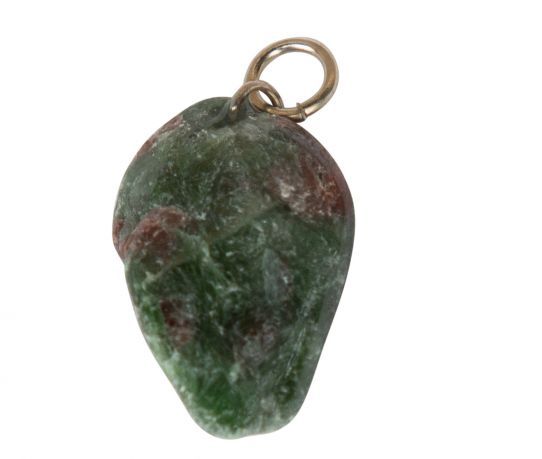We use cookies to make your experience better.
Garnet in eclogite "eyes-chain" from Norway
Eclogite (pronunciation: /ˈɛklədʒaɪt/) is a mafic metamorphic rock. Eclogite forms at pressures greater than those typical of the crust of the Earth. An unusually dense rock, eclogite can play an important role in driving convection within the solid Earth. The fresh rock can be striking in appearance, with red to pink garnet (almandine-pyrope) in a green matrix of sodium-rich pyroxene (omphacite). Accessory minerals include kyanite, rutile, quartz, lawsonite, coesite, amphibole, phengite, paragonite, zoisite, dolomite, corundum, and, rarely, diamond. Plagioclase is not stable in eclogite. Eclogite typically results from high-pressure metamorphism of mafic igneous rock (typically basalt or gabbro) as it plunges into the mantle in a subduction zone. Such eclogites are generally formed from precursor mineral assemblages typical of blueschist-facies or amphibolite-facies metamorphism. Eclogite can also form from magmas that crystallize and cool within the mantle or lower crust. Eclogite is a rare and important rock because it is formed only by conditions typically found in the mantle or the lowermost part of thickened crust. Eclogites are helpful in elucidating patterns and processes of plate tectonics because many represent oceanic crust that has been subducted to depths in excess of 35 km and then returned to the surface. Eclogite that is brought to shallow conditions is unstable, and retrograde metamorphism often occurs: secondary amphibole and plagioclase may form reaction rims on the primary pyroxene or garnet, and titanite may form rims about rutile. Eclogite may completely retrogress to amphibolite or granulite during exhumation. In some retrogressed eclogites and accompanying more silica-rich rocks, UHP (ultrahigh-pressure) metamorphism has been recognized only because of the preservation of coesite and/or diamond inclusions within trace minerals such as zircon and titanite.












